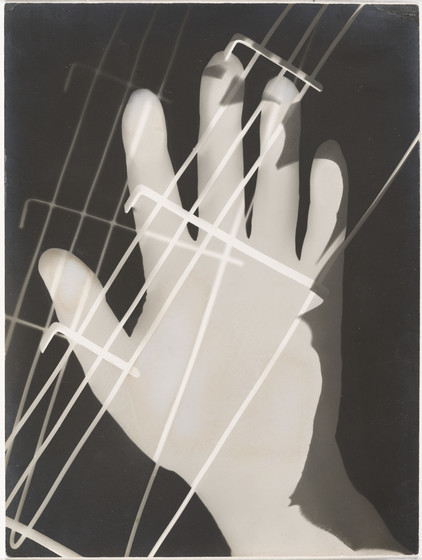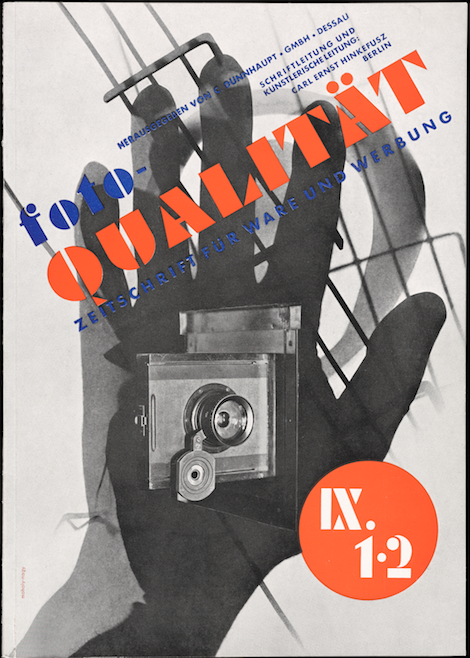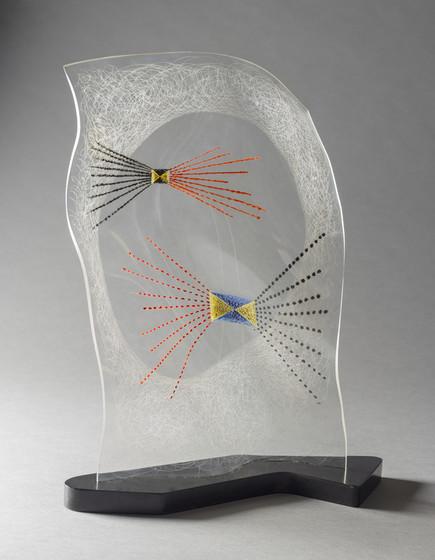121 . . . not exactly a landmark birthday, but definitely nothing to sneeze at. Today marks the 121st anniversary of the birth of pioneering artist László Moholy-Nagy (1895–1946). The subject of a major retrospective, Moholy-Nagy: Future Present, co-organized by LACMA and currently on view at the Guggenheim Museum in New York, Moholy was a utopian who believed that art could work hand-in-hand with technology for the betterment of humanity. His practice looked forward to contemporary art’s love of the cross- and interdisciplinary: Moholy was a painter, photographer, sculptor, and filmmaker as well as a graphic, exhibition, and stage designer and an influential teacher at the Bauhaus in Germany and later the founder of Chicago’s Institute of Design.
Moholy was also a fan of new technologies and industrial materials not traditionally used for art. He was particularly fascinated by Plexiglas, which both transmits and reflects light, another of his preferred (and non-traditional) mediums. Plexiglas was first produced in cast sheets in 1934 and was marketed for industrial applications including airplane windshields. Moholy incised and painted with oil on flat sheets of Plexi, at times heating them in his kitchen oven and then shaping them by hand into undulating forms, including LACMA’s Vertical Black, Red, Blue. When light hits these rippling surfaces, it creates both bright reflections and beautiful shadows, all of which change continuously as the viewer moves around the work. Moholy loved this endless potential for change, referring to these plastic works as “the passage between easel painting and light display, a new type of moving pictures.”

Moholy was also a pioneer of cameraless photographs, known as photograms, which he made by placing everyday objects—in the case of LACMA’s untitled work of 1926, the artist’s hand and a wire grid—on light-sensitive paper and then exposing the setup to light. The paper was subsequently developed and fixed like a traditional gelatin-silver print made from a negative, creating a ghostly but powerful image with a beautiful range of black-to-white tones. Moholy believed in the inherent reproducibility of images and sought to disseminate them as widely as possible. He frequently repurposed his unique images for book and magazine covers, which were then disseminated by the hundreds or even thousands. In his design for the cover of the special photography issue (1931) of the magazine Qualität, Moholy used a negative (black-for-white), mirror image of LACMA’s photogram combined with another photogram (in the right background of the magazine cover, largely obscured), a photograph of a camera, and typography. Deploying the technology available in his time, Moholy created a highly relevant paradigm for today’s world of images spread not in print but rather via the internet.

Moholy-Nagy: Future Present, which reveals the full range of the artist’s practice, will be on view at LACMA from February 12 through June 18, 2017. In the meantime, we’ll give him a high-five for his 121st birthday!



